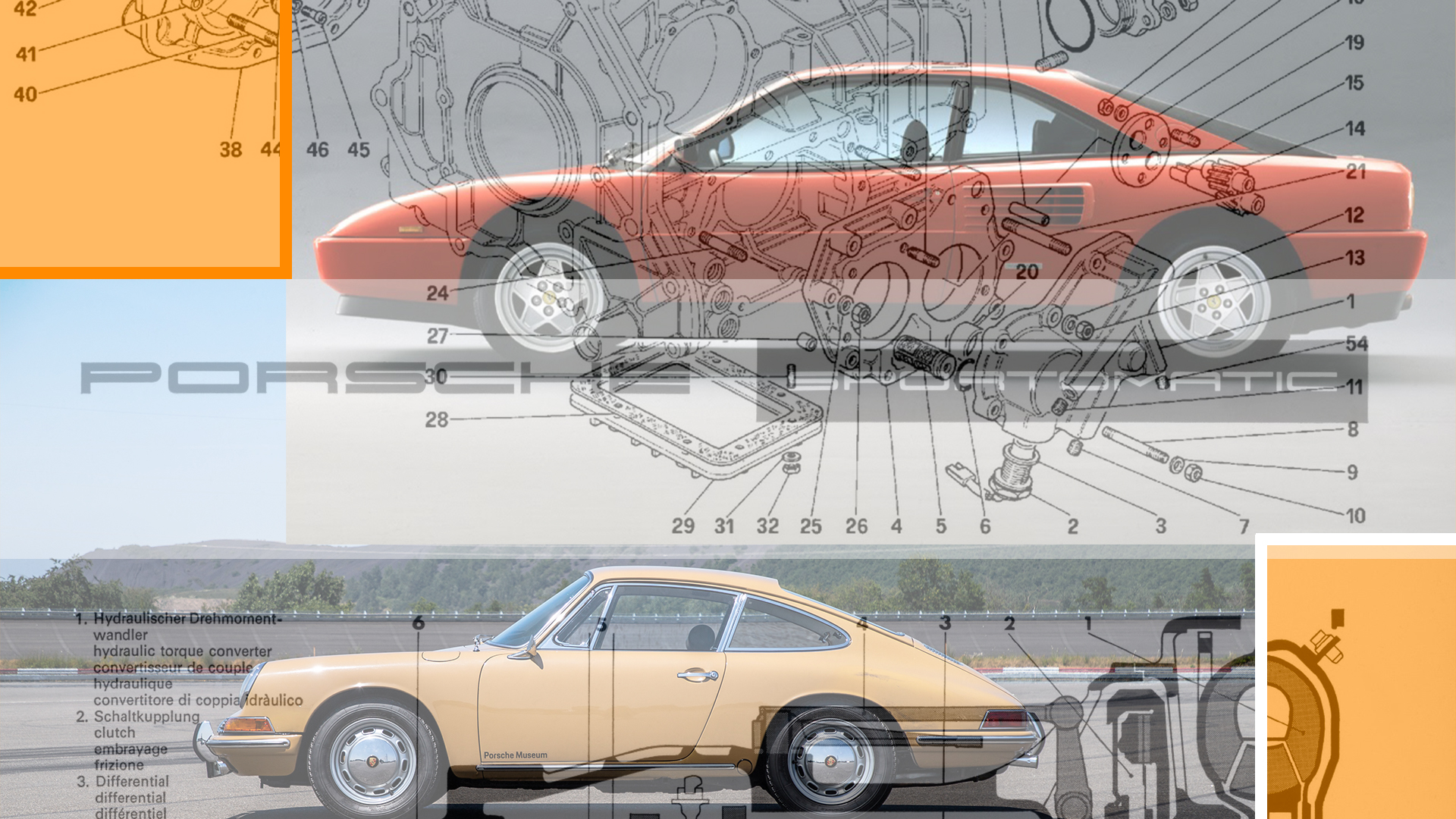

Long before companies like Volkswagen and Porsche got the technology right with DSG and PDK, respectively, many automakers spent years trying and failing to make a manual gearbox work with no clutch pedal. I’m not talking about the hot garbage that was BMW’s SMG gearbox or the automated manual in the Aston Martin Vanquish. We need to go weirder than that. It’s time to journey back to the early, fast-and-loose days of automated manual technology. I’m talking about the Porsche 911 Sportomatic and the Ferrari Mondial T Valeo.
Today, automated manual gearboxes are almost always operated with paddle shifters off the steering wheel, or maybe a gear lever with an up-and-down motion. Things used to be a lot stranger than that—think an H-pattern shifter like a conventional manual, but with no clutch pedal. This does have some benefits. For people with disabilities, this offers an alternative to rowing your own gears if it’s otherwise impossible, and I applaud the effort from the automakers, though I’m not certain if that was their initial goal.

Chrysler offered this sort of thing back in the 1940s, and the Volkswagen Beetle had a version of it too. But one of the earliest performance-centric clutchless manual gearbox systems I can find is the Porsche Sportomatic that was available in 1967, three years after the debut of the 911. It’s the most unique of them all because it uses a gearbox called the 905, a four-speed manual, with a torque converter and normal clutch. The torque converter was fitted so the engine wouldn’t stall when coming to a stop and for torque multiplication while the pneumatically actuated clutch was to disengage the gears for smooth shifts.

A small switch was added to the shift lever so the car could detect when a shift was demanded and sent a signal to the pneumatic ram that disengaged the clutch. If that isn’t weird enough, the car has an H-pattern but it’s marked like an automatic with L where first gear is, D where second gear is, D3 in third, and D4 in fourth. Porsche advises owners to use D as the normal driving gear, but you can shift from L through the gears if desired. It’s ostensibly a manual gearbox, but I feel that it is blurring the line quite severely. It seems that it can function as a normal automatic most of the time.

With that, let’s take a look at what Ferrari did in the 1980s with the Mondial Valeo T. The Valeo part of that nameplate comes from French parts supplier Valeo and its contribution to making a clutchless system for the manual gearbox Mondial T. They may have taken inspiration from the Porsche Sportomatic concept but decided to ditch the torque converter and unique hardware in favor of some computing power from Valeo along with an electronic clutch actuator fitted to the standard gated manual gearbox. From this archived Road & Track review of the Valeo, it seems that Ferrari decided that this gearbox makes the Mondial T more accessible to women. It wouldn’t be old car technology without a healthy dosage of casually harmful sexism.
This is the general concept that has held up to this day. Using electronics to precisely locate the clutch and shifter helps the car make a smoother shift, and the Mondial Valeo apparently monitors and protects from inputs that would damage the engine or gearbox through vehicle speed, RPM, and gear selection.

I found a YouTube video of someone driving it, and it’s illuminating. It’s interesting to see how seamless and easy the Valeo is to drive. It seems that you drive it like a manual without a clutch. That’s to say you can’t be too slow on the shifts and you should still exercise some throttle control and lift-off during shifts. I’d be down to rip one of those in some canyons just to see how it feels. I’d probably be kicking the floorboard every mile from the lack of clutch pedal.
While these gearboxes may seem pointless, they do genuinely let more people enjoy the cars. Some people flat out do not want to drive stick, and this removes one of the great stresses of manual gearbox operation. For me and you, it’s a source of great satisfaction. For others, it’s another thing they don’t want to be doing on a nice sunny cruise. And in an era today when every new car can kind of feel the same, these strange old gearboxes show us how evolution of technology isn’t always a straight line.
What’s even wilder is that the technology isn’t even dead. Today, Hyundai produces the newest example with the Venue iMT, a gearbox option not sold in the United States. Like the transmissions on our list, it uses a normal H-pattern shifter but has no physical clutch pedal. It’s an interesting technology and it’s made much easier by the totality of modern engine management. Where these old cars had to work around their primitive ECUs, the Hyundai can dance with all of the subsystems of the car.
In other words, don’t count a weird idea out. You never know when it may show up again.